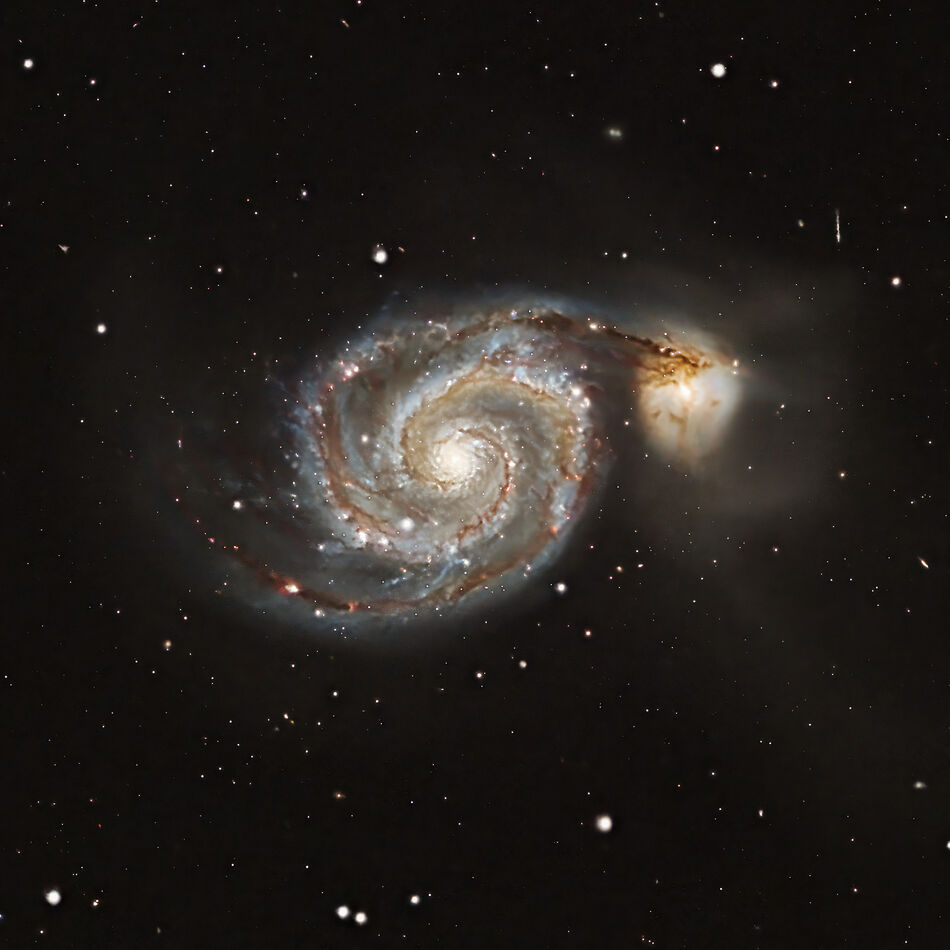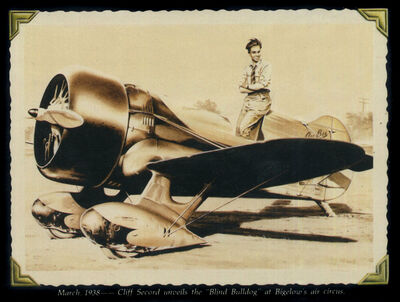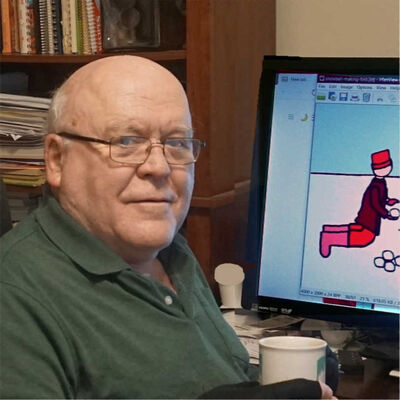M51
Apr 9, 2024 18:38:06 #
M51 from last couple of nights, and I can see that the space time continuum is starting to rip again...
Apr 9, 2024 19:10:28 #
Apr 9, 2024 19:53:13 #
Apr 9, 2024 22:30:52 #
Apr 10, 2024 12:51:02 #
pfrancke wrote:
M51 from last couple of nights, and I can see that the space time continuum is starting to rip again...
Lovely result!
bwa
Apr 13, 2024 08:47:54 #
pfrancke wrote:
M51 from last couple of nights, and I can see that the space time continuum is starting to rip again...
sVery nice.
What equipment did you use tocapture this photo of M51? I am always inquisitive, wishing I had a better way of getting such pictures. --Richard
Apr 14, 2024 08:17:23 #
thanks Seal, Bruce, Skyking, bwa, and Richard.
Richard, here is my hardware used for this shot:
ZWO 130 mm Apochromatic Quadruplet Refractor Optical Tube (the telescope)
ZWO AM5 mount (mount tracks the stars)
ZWO ASIAIR Plus (computer tells everything what to do and holds the images)
ZWO ASI2600MC-Duo (camera which includes a built in guide sensor)
ZWO EAF (computer uses this motor to put scope into focus)
Optolong L-Pro (filter cuts through light pollution and moonlight)
Jackery battery (gives me two power feeds one used by mount and one used by computer - which feeds juice to camera)
Pixinsight - software used for stacking, image stretching and processing (very hard to learn, I am a noob with it)
Photoshop - used to tweek colors and saturation since I am such a noob with pixinsight.
Learning curve is likely an order of magnitude simpler than it was a decade ago!!!
Richard, here is my hardware used for this shot:
ZWO 130 mm Apochromatic Quadruplet Refractor Optical Tube (the telescope)
ZWO AM5 mount (mount tracks the stars)
ZWO ASIAIR Plus (computer tells everything what to do and holds the images)
ZWO ASI2600MC-Duo (camera which includes a built in guide sensor)
ZWO EAF (computer uses this motor to put scope into focus)
Optolong L-Pro (filter cuts through light pollution and moonlight)
Jackery battery (gives me two power feeds one used by mount and one used by computer - which feeds juice to camera)
Pixinsight - software used for stacking, image stretching and processing (very hard to learn, I am a noob with it)
Photoshop - used to tweek colors and saturation since I am such a noob with pixinsight.
Learning curve is likely an order of magnitude simpler than it was a decade ago!!!
Apr 14, 2024 14:43:26 #
Apr 14, 2024 15:04:43 #
pfrancke wrote:
thanks Seal, Bruce, Skyking, bwa, and Richard. br ... (show quote)
Well, that is some awesome set-up. I had not heard about the ZWO refractor and associated equipment before. I have not looked at all the equipment, so do you have a driven mount for the telescope, or do you take all quick photos?
The photo is very good. Thanks for sharing. --Richardthe
Apr 14, 2024 18:07:06 #
profbowman wrote:
Well, that is some awesome set-up. I had not heard about the ZWO refractor and associated equipment before. I have not looked at all the equipment, so do you have a driven mount for the telescope, or do you take all quick photos?
The photo is very good. Thanks for sharing. --Richardthe
The photo is very good. Thanks for sharing. --Richardthe
thanks Sonny, and
Richard, thanks for asking. Yeah the mount tracks the stars (once it is polar aligned). Without tracking you are hard pressed to have an exposure longer than a couple of seconds for a telephoto lens before stars start becoming elongated. And then there is guiding... which is a smaller lens/sensor that takes photos every couple of seconds and makes small guiding adjustments to the tracking. This allows the larger telephoto lens to stay on target for 300 or 500 seconds. In the image of M51 for example we have about 35 images taken with each exposure being at 300 seconds, and then the software stacks (blends) the images together.
The stacking software is very sophisticated and does a wonderful job recognizing signal and getting rid of noise. For instance, each image taken might have a satellite trail in it, but they are eliminated from the final result because the software recognizes that the trail is not in all the images, so it gets ignored.
Apr 14, 2024 21:45:22 #
pfrancke wrote:
thanks Sonny, and br Richard, thanks for asking. ... (show quote)
I have never used staccking software, b ut I keep thinking I want to do so. But with astronomy, I do wonder about what data I will lose.
Reducing noise is a wonderful thing in astro-photography except for certain dynamic subjects. Does it blur out the dynamic part of eruptive prominences, and will it wipe out some of the Stirling nature of the Red Spot in Jupiter's atmosphere? I am curious. --Richard
Apr 14, 2024 23:20:14 #
profbowman wrote:
I have never used staccking software, b ut I keep thinking I want to do so. But with astronomy, I do wonder about what data I will lose.
Reducing noise is a wonderful thing in astro-photography except for certain dynamic subjects. Does it blur out the dynamic part of eruptive prominences, and will it wipe out some of the Stirling nature of the Red Spot in Jupiter's atmosphere? I am curious. --Richard
Reducing noise is a wonderful thing in astro-photography except for certain dynamic subjects. Does it blur out the dynamic part of eruptive prominences, and will it wipe out some of the Stirling nature of the Red Spot in Jupiter's atmosphere? I am curious. --Richard
I am sure that I am not saying it well. When I say reduce noise, perhaps it is better to say that it eliminates that which it recognizes as random. And it keeps that which reinforced as being signal. Or valid data if you will. So through the miracle of stacking (math and statistics), you end up seeing deeper and more clearly than you otherwise might.
But yeah, it depends on what you are seeking to see and understand. If you desire to capture the pure moment, rapidly unfolding then the only solution is to improve the resolution of it all. To capture more light more quickly and with greater sensitivity. Stacking is but the poor man's tool to make the most of what we are given.
The cosmos as we view it, it is SLOW and obscenely massively large, and so to be able to see it more fully, the cheating of stacking works very well.
And please don't take my wild rambling about this all to the bank. Like all photography, recognizing the difference between truth and lies requires a connection between the viewer and the object viewed and somehow a mechanical processes touches the soul and becomes Art. Lies and truth, signal and noise, but words that depend on the connection between the seer and the seen.
Or to say the same thing in a more powerful way... the famous quote - "And if you gaze for long into an abyss, the abyss gazes also into you."
Apr 16, 2024 09:21:14 #
pfrancke wrote:
I am sure that I am not saying it well. When I sa... (show quote)
Thanks again for sharing your procedure and the philosophy behind it. I definitely understand how stacking reduces random noise. What I am unclear about is how stacking hides or enhances regular motion.
For example, with a period of 4.5 days, Jupiter's Giant Red Spot is moving at just over 3 deg per hour. So, long exposures and/or stacking will affect how this motion is recorded in the final photo. Just things I think about from time to time but without the equipment to experiment. --Richard
Apr 16, 2024 12:15:05 #
pfrancke,
Your M51 is special, especially when viewing the download. What really drew me in was the amount of continuum, IFN, or ___ (fill in the blank with the correct noun) you were able to extract with your noob Pixinsight post-processing. I'd gladly take half of your talent with that program.
Jay
Your M51 is special, especially when viewing the download. What really drew me in was the amount of continuum, IFN, or ___ (fill in the blank with the correct noun) you were able to extract with your noob Pixinsight post-processing. I'd gladly take half of your talent with that program.
Jay
Apr 16, 2024 12:16:08 #
Oh, I forgot to ask if you know what the squiggly vertical line is to the upper right of the galaxy?
Jay
Jay
If you want to reply, then register here. Registration is free and your account is created instantly, so you can post right away.




